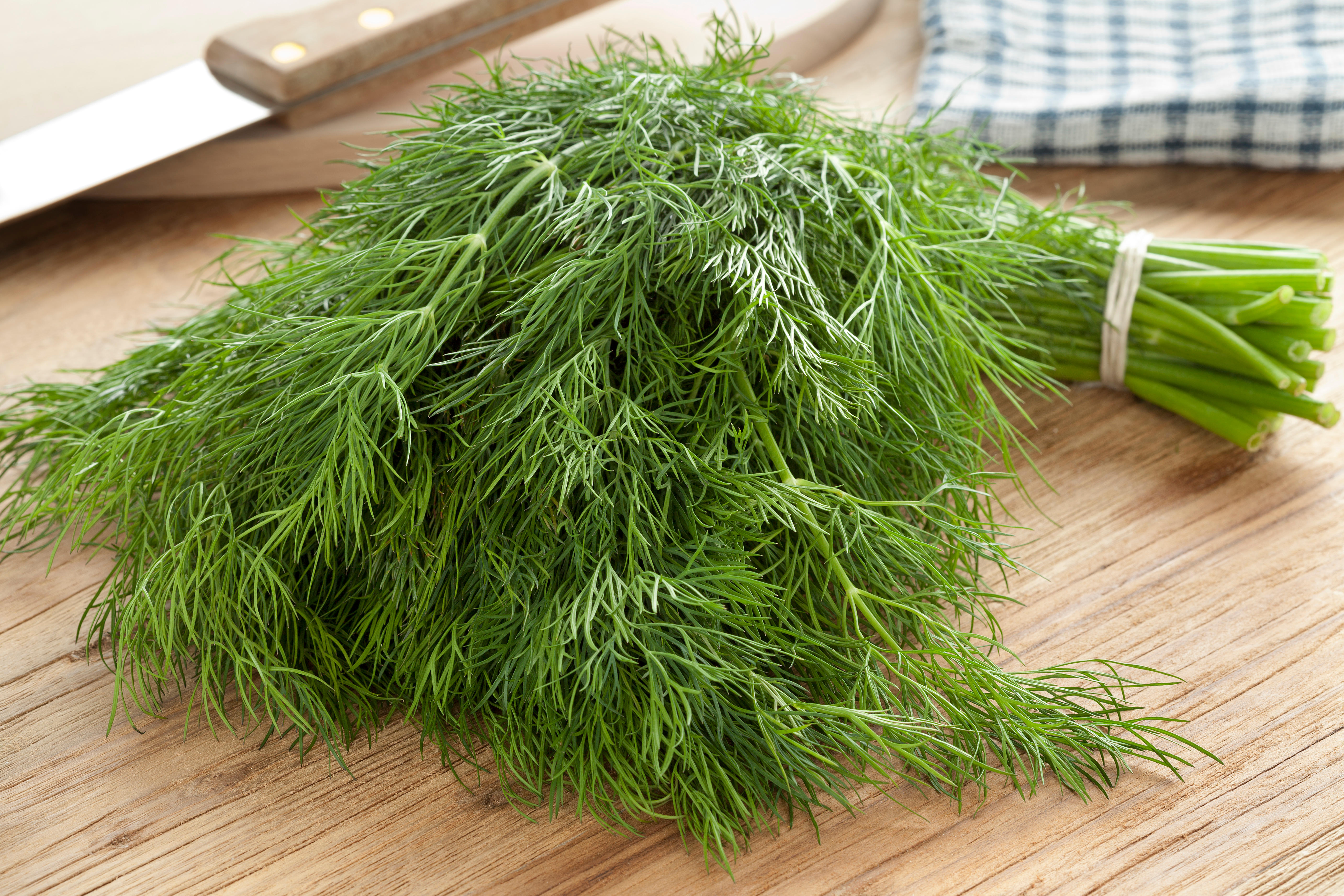How to harvest dill – and get the most from this versatile herb
Discover how to harvest dill and celebrate every part of this annual herb


An architectural statement in any herb patch or border, master how to harvest dill and you can enjoy many different uses from this fast-growing plant. From the delicate cut leaves with their distinct flavor to the aromatic seeds that smell much like caraway, plus its beauty as a cut and edible flower, it’s a particularly useful plant to grow.
There are many different varieties of dill to choose from, each with slightly varying habits and tastes. New dwarf types such as ‘Fernleaf’ and ‘Nano’ are ideal for growing in pots and window boxes, as they only reach (30-45cm) high and are rather prolific. Taller, as the name suggests, is Mammoth, which scales the heights of 5ft 10in (1.8cm) and has large umbrella style flowers.
You can grow dill to pair with fish and seafood dishes; fresh dill leaves have a strong liquorice flavor, so a little goes a long way. Once cooked it tends to lose its taste, so it is best added towards the end of cooking, in salads or to garnish soups.
‘Traditionally seen as an aromatic and warming digestive herb with relaxing and calming effects on the gut, dill has often been used to relieve nausea, colic and wind whilst assisting with appetite and digestion,’ says herb grower and expert, Jekka McVicar.
How to harvest dill
Pruning dill is known to extend its life span, and like many herbs, picking little and often is a great way to liven up your dishes as well as promoting strong, healthy plants.
Wait until the plant has four or five leaves and start by picking off larger outer leaves. This will prompt new shoots and foliage to grow, plus delay flowering and seed formation. Avoid harvesting the center or whole of the plant as it is unlikely to regrow.
‘Annual herbs like dill can be harvested early in their growing season, either cut back to about 4 inches (10 cm) of growth or taken from all around the plant to leave it looking balanced. Removing flower stalks will also prolong leaf production’, says Catherine Wallsgrove, owner of Pepperpot Nursery.
Design expertise in your inbox – from inspiring decorating ideas and beautiful celebrity homes to practical gardening advice and shopping round-ups.
How to harvest edible dill flowers
Dill’s tiny bright yellow flowers are edible and rather delicious. Surprisingly strong tasting for their size, they are great for garnishing sweet and savory dishes and salads. Best consumed fresh, you can simply snip off what you need. They can also be popped into freezer bags and frozen for later use.
How to harvest dill seeds
Dill seeds are teardrop in shape with a distinct brown stripy coat. Tasting slightly of carraway and aniseed they can be toasted, grilled or baked to intensify the earthy flavour. To harvest your own supply, Nina Marshall at Chiltern Seeds says to, ‘Allow flowers to open and brown before trimming off and drying seed.’
One easy way to do this is to snip off the fading flower stems and place upside down in a paper bag. Tie and hang up some where warm and dry. Once the seeds are ripe they will fall into the bag, ready for storing.
How do you pick fresh dill from the garden?
To pick dill from the garden, timing is everything. The best time to pick dill leaves is just before the flowers open. Before harvesting, spray leaves with water, the leave overnight before picking early in the morning.
Is it okay to let dill flower?
It is okay to let dill flower if you want to harvest the seeds in cookery or enjoy the dill as a decorative plant. Once the flowers are brown, the seeds will go from green to brown; at this point, you can cut off the flower heads, tie them in bunches and hang somewhere warm to dry before harvesting the seeds.

Journalist Jill Morgan has spent over 20 years writing and editing gardening, interior and property features. Titles she has worked on include The English Home, House Beautiful, Ideal Home, Houzz and Modern Gardens and she writes regularly for H&G as a Contributing Editor. Whilst she is a dab hand at renovation projects and DIY, she is happiest when out digging in the garden or planning a new border.